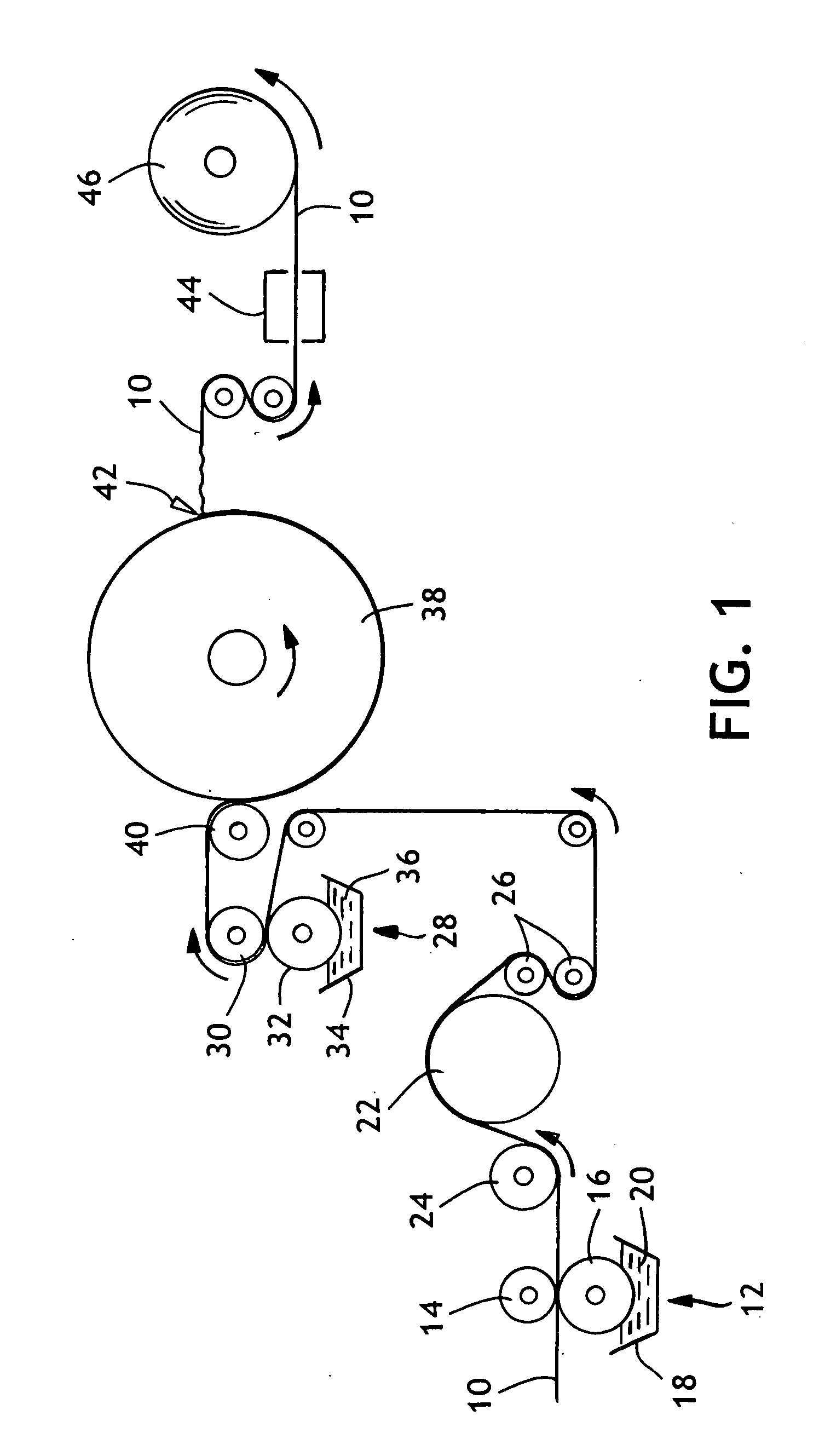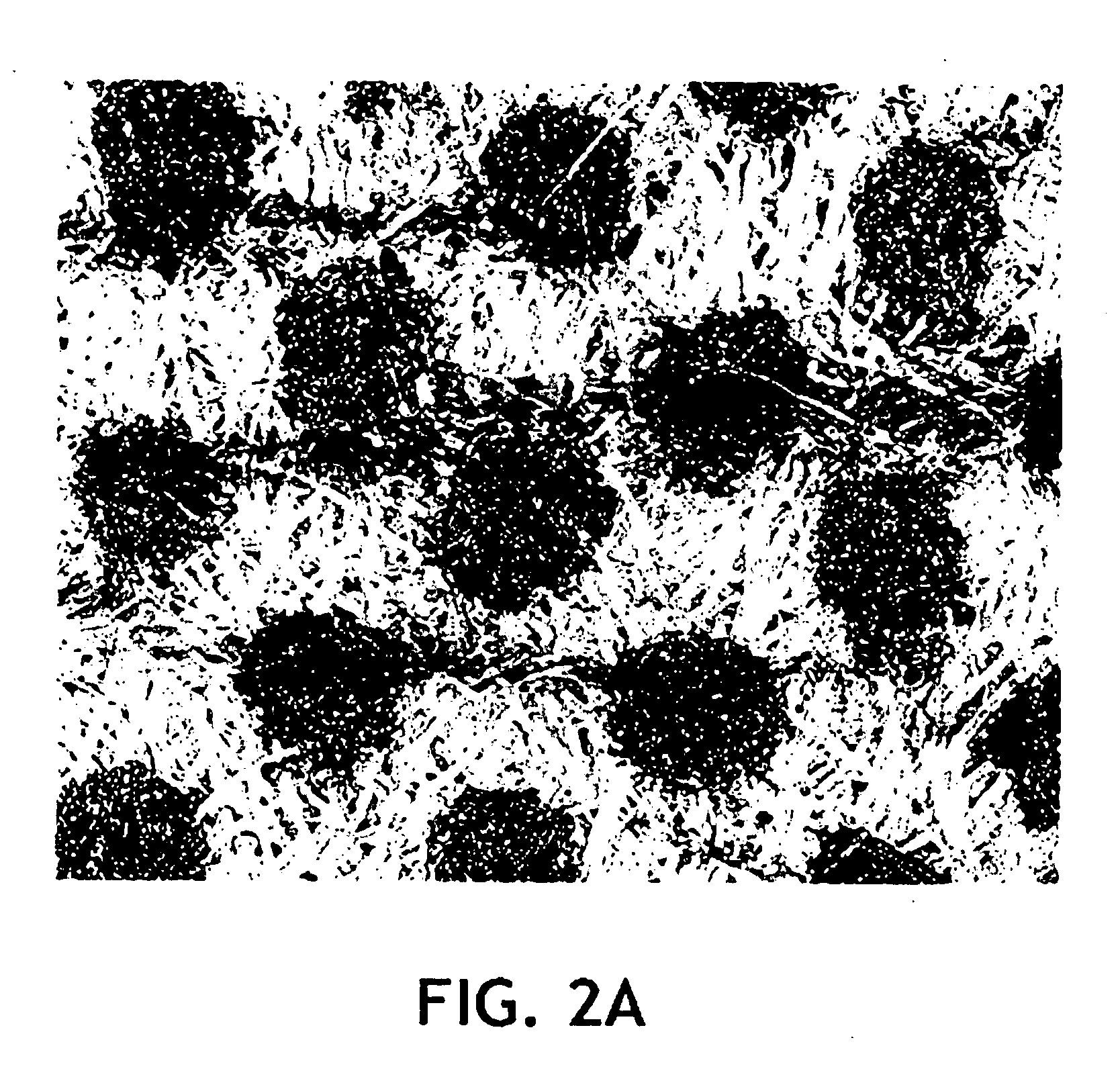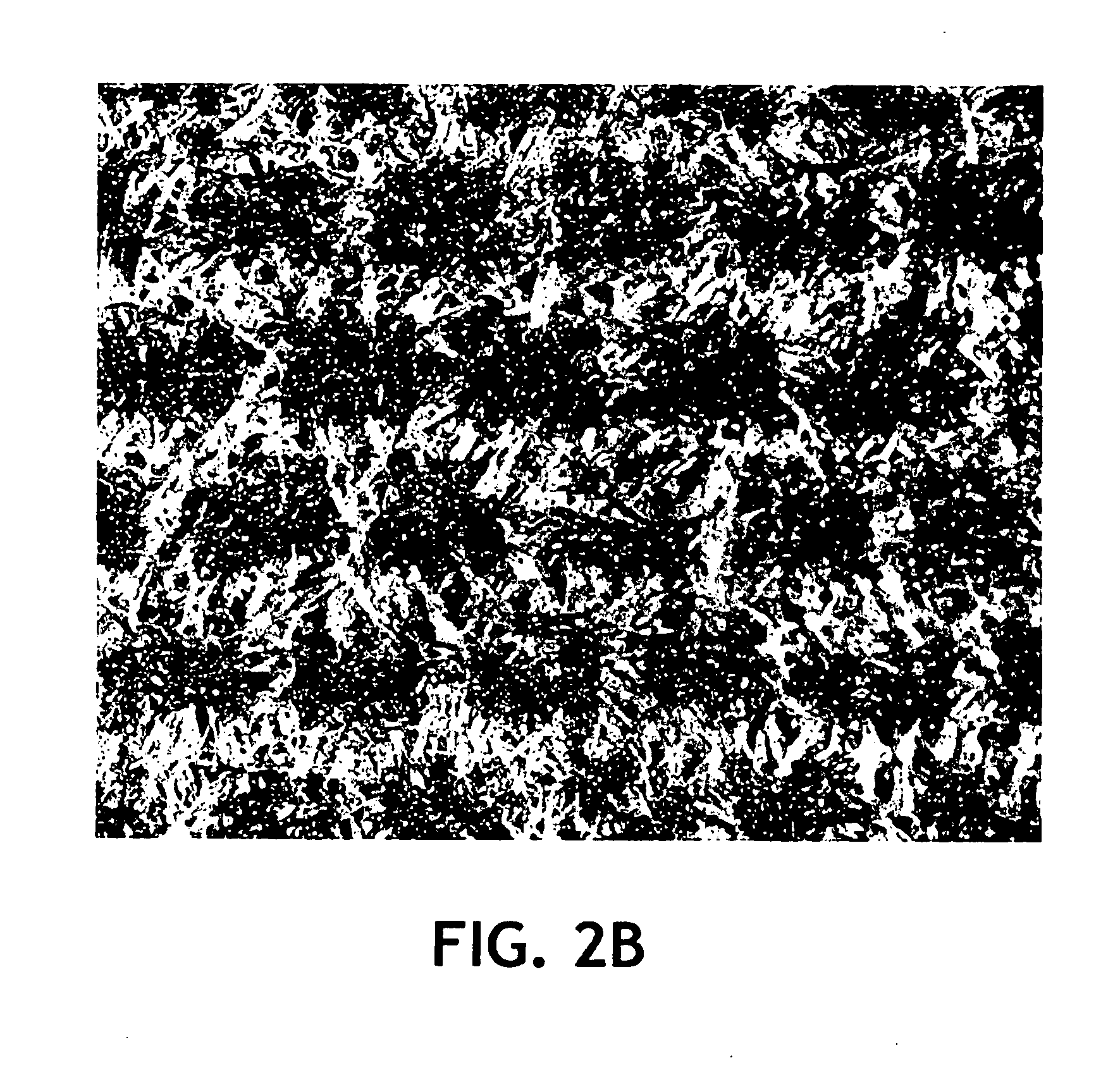Low odor binders curable at room temperature
a technology of binders and room temperature, applied in the field of low odor binders curable at room temperature, can solve the problems of insufficient strength properties imparted to the web, disadvantage, unnecessary high curing temperature, etc., and achieve the effects of increasing the reaction rate, facilitating the storage of concentrated polymers, and increasing the ph
- Summary
- Abstract
- Description
- Claims
- Application Information
AI Technical Summary
Benefits of technology
Problems solved by technology
Method used
Image
Examples
example 1
Comparative
A tissue machine was used to produce a layered, uncreped through-air-dried (UCTAD) basesheet generally as described in the following U.S. patents: U.S. Pat. No. 5,607,551, issued Mar. 4, 1997 to Farrington et al.; U.S. Pat. No. 5,672,248 issued Sep. 30, 1997 to Wendt et al.; and U.S. Pat. No. 5,593,545 issued Jan. 14, 1997 to Rugowski et al., all of which are hereby incorporated by reference. After manufacture on the tissue machine, the UCTAD basesheet was printed on each side with a latex-based binder. The binder-treated sheet was adhered to the surface of a Yankee dryer to re-dry the sheet and thereafter the sheet was creped and thermally cured. The resulting sheet was tested for physical properties immediately after manufacture and then periodically during a 2 week period to monitor development of strength properties after natural aging at room temperature (about 23° C.) and humidity (about 50% relative humidity).
More specifically, the basesheet was made from a str...
example 2
Invention
A single-ply bonded sheet was produced as described in Example 1, except the binder recipe in this example contained a carboxylated vinyl acetate-ethylene terpolymer, Airflex® 426, which was obtained from Air Products and Chemicals, Inc. of Allentown, Pa. The latex binder addition was measured using atomic absorption.
The bonding formulation for this example was prepared as two separate mixtures, called the “latex” and “reactant”. The “latex” material contained the epoxy-reactive polymer and the “reactant” was the epoxy-functional polymer. The procedure calls for each mixture to be made up independently, and then combined together prior to use. After the latex and reactant mixtures were combined, the appropriate amount of “thickener” (Natrosol solution) was added to adjust viscosity. The “latex” and “reactant” mixtures contained the following ingredients, listed in their order of addition.
Latex1. Airflex ®426 (62.7% solids)8,555 g2. Defoamer (Nalco 7565) 50 g3. Water4...
example 3
Invention
A single-ply bonded sheet was produced as described in Example 2, except the cure air temperature was about 149° C. The resulting single-ply sheet was tested for tensile strength, basis weight and caliper shortly after manufacture. The tensile strength properties were also tested periodically over the 15 days following manufacture. The latex binder addition was measured using atomic absorption. Approximately 5.5% by weight Airflex® 426 was applied to the sheet.
PUM
| Property | Measurement | Unit |
|---|---|---|
| Temperature | aaaaa | aaaaa |
| Temperature | aaaaa | aaaaa |
| Temperature | aaaaa | aaaaa |
Abstract
Description
Claims
Application Information
 Login to View More
Login to View More - R&D
- Intellectual Property
- Life Sciences
- Materials
- Tech Scout
- Unparalleled Data Quality
- Higher Quality Content
- 60% Fewer Hallucinations
Browse by: Latest US Patents, China's latest patents, Technical Efficacy Thesaurus, Application Domain, Technology Topic, Popular Technical Reports.
© 2025 PatSnap. All rights reserved.Legal|Privacy policy|Modern Slavery Act Transparency Statement|Sitemap|About US| Contact US: help@patsnap.com



